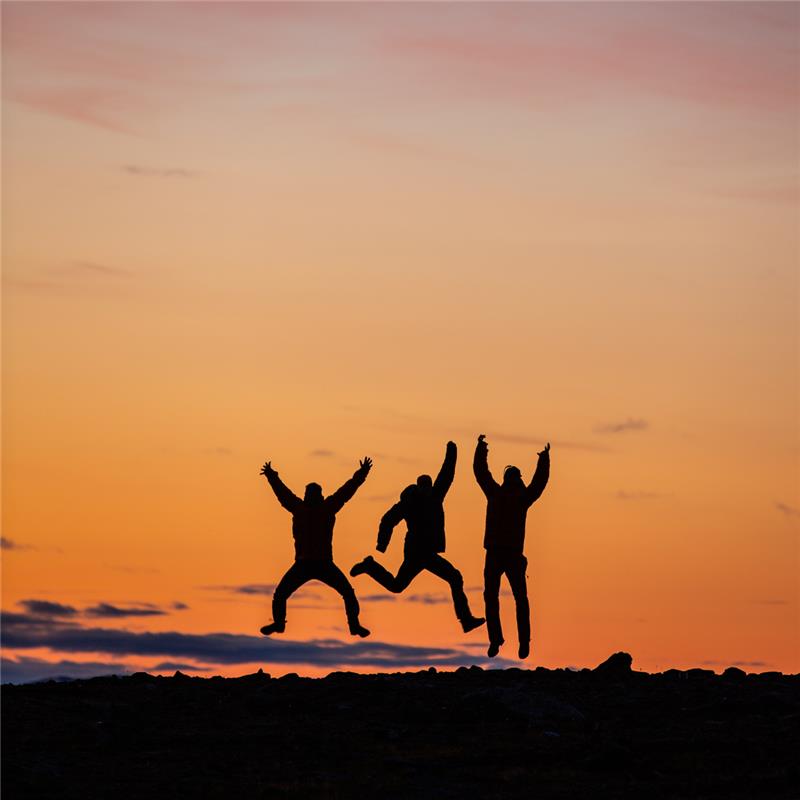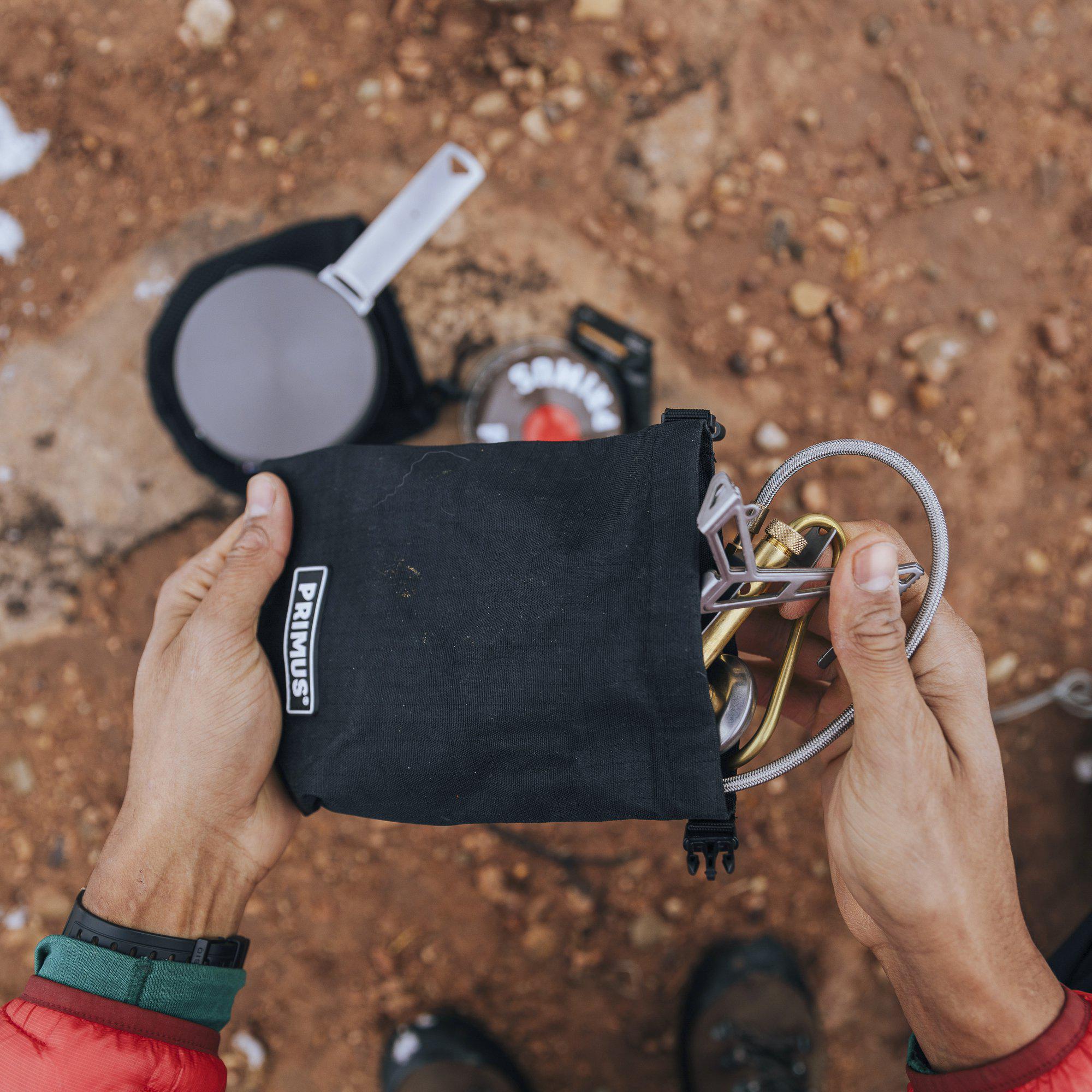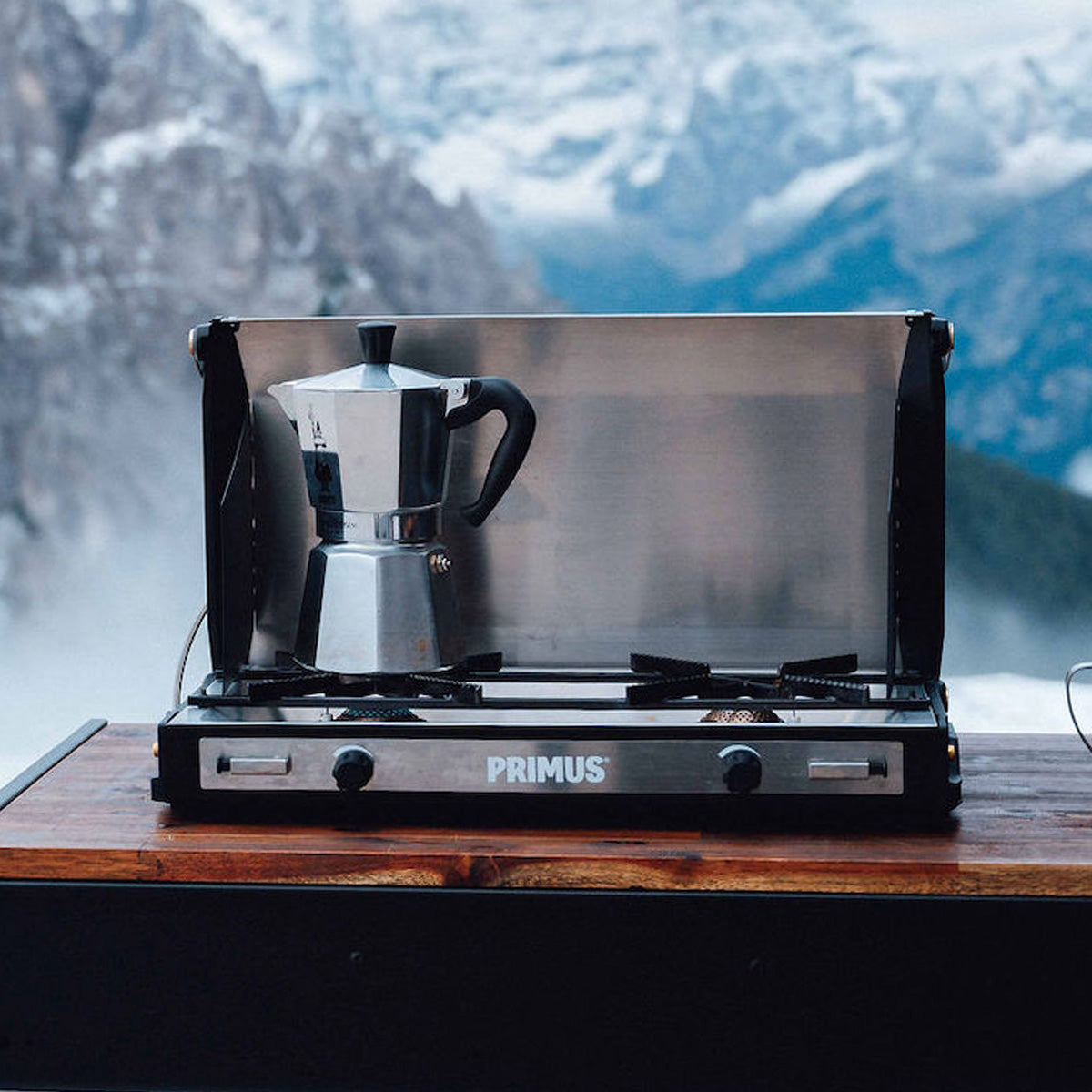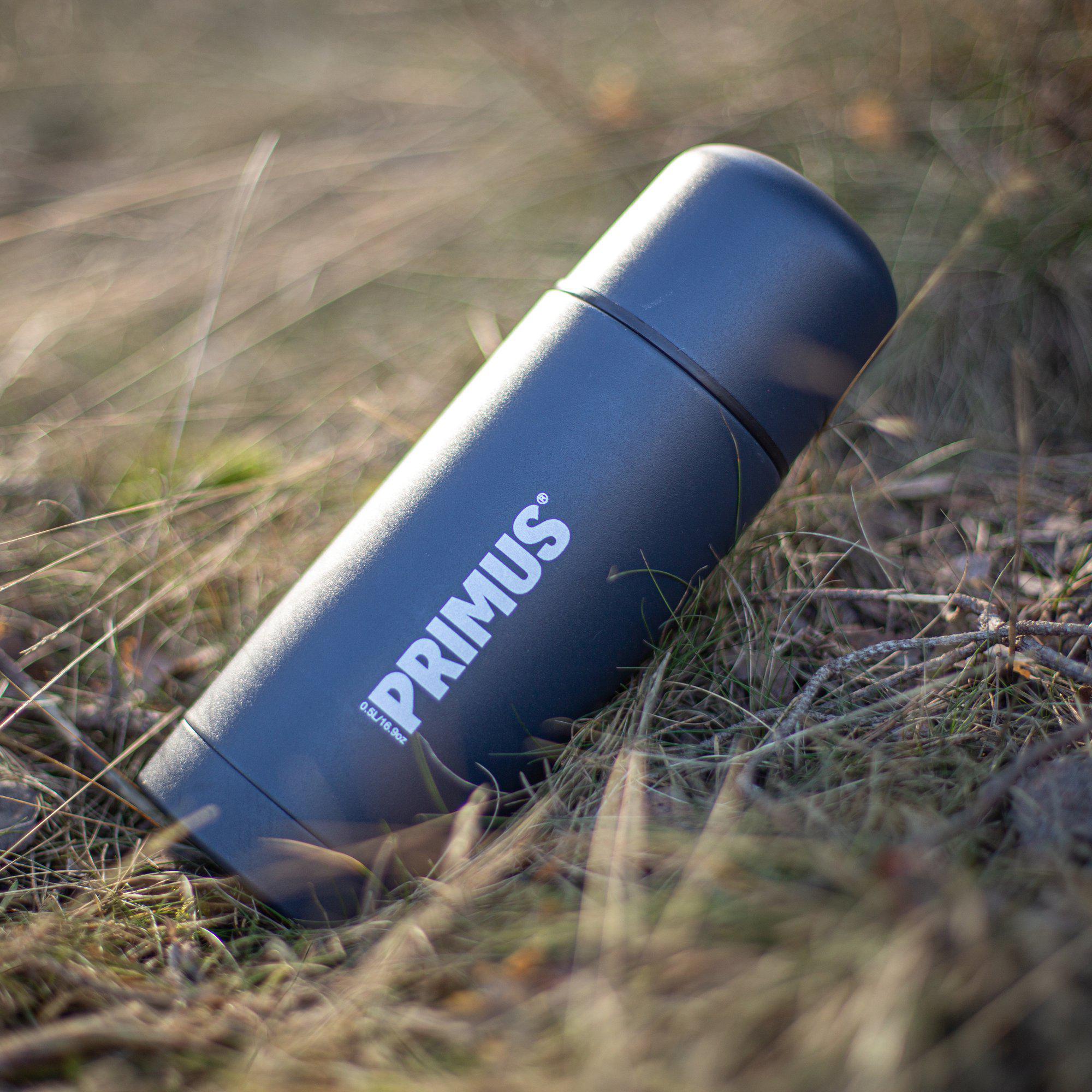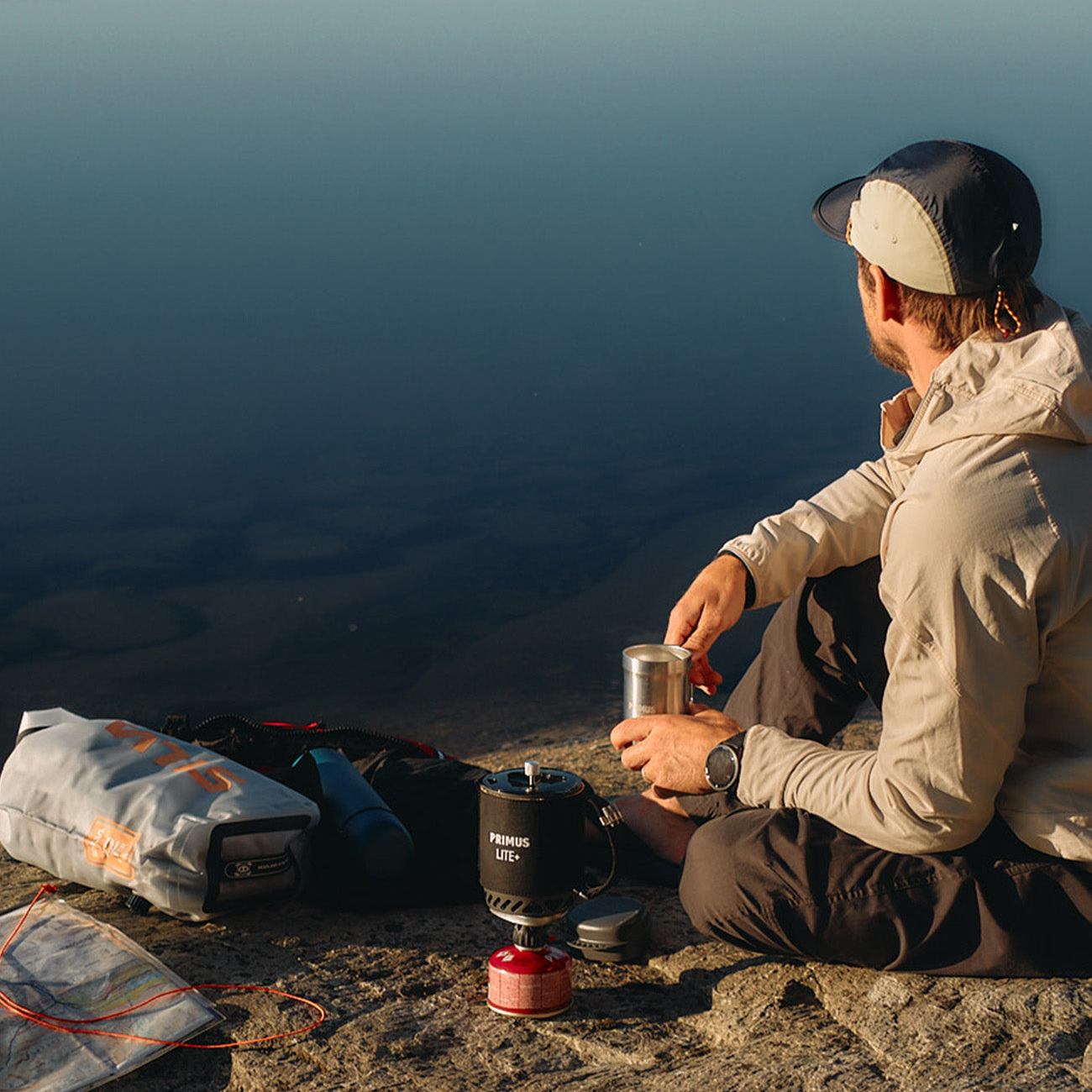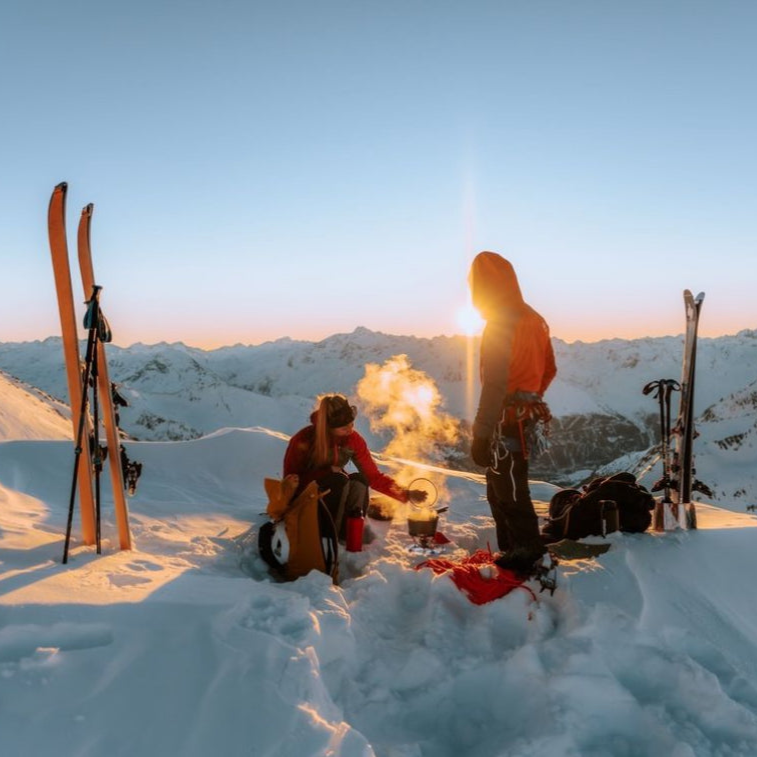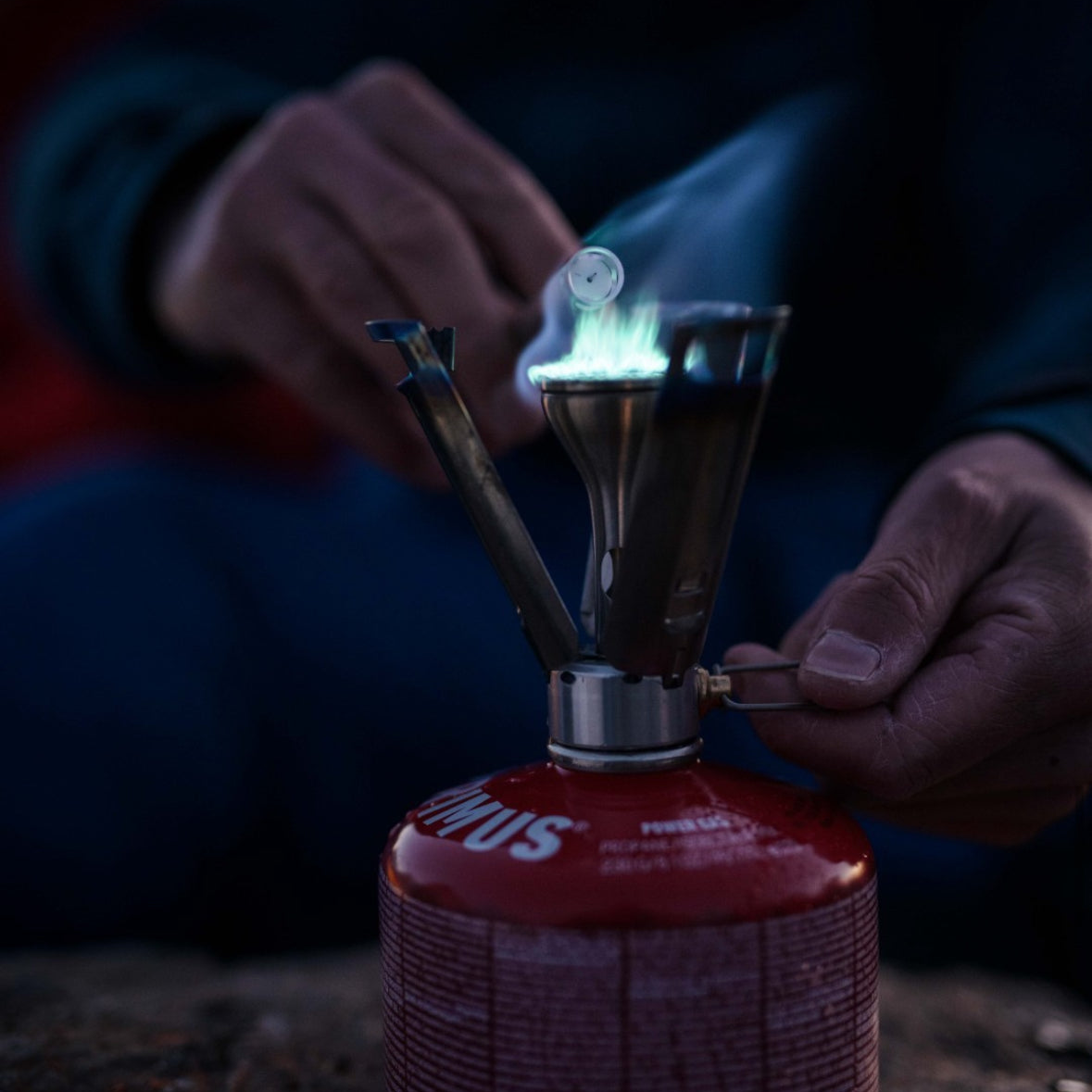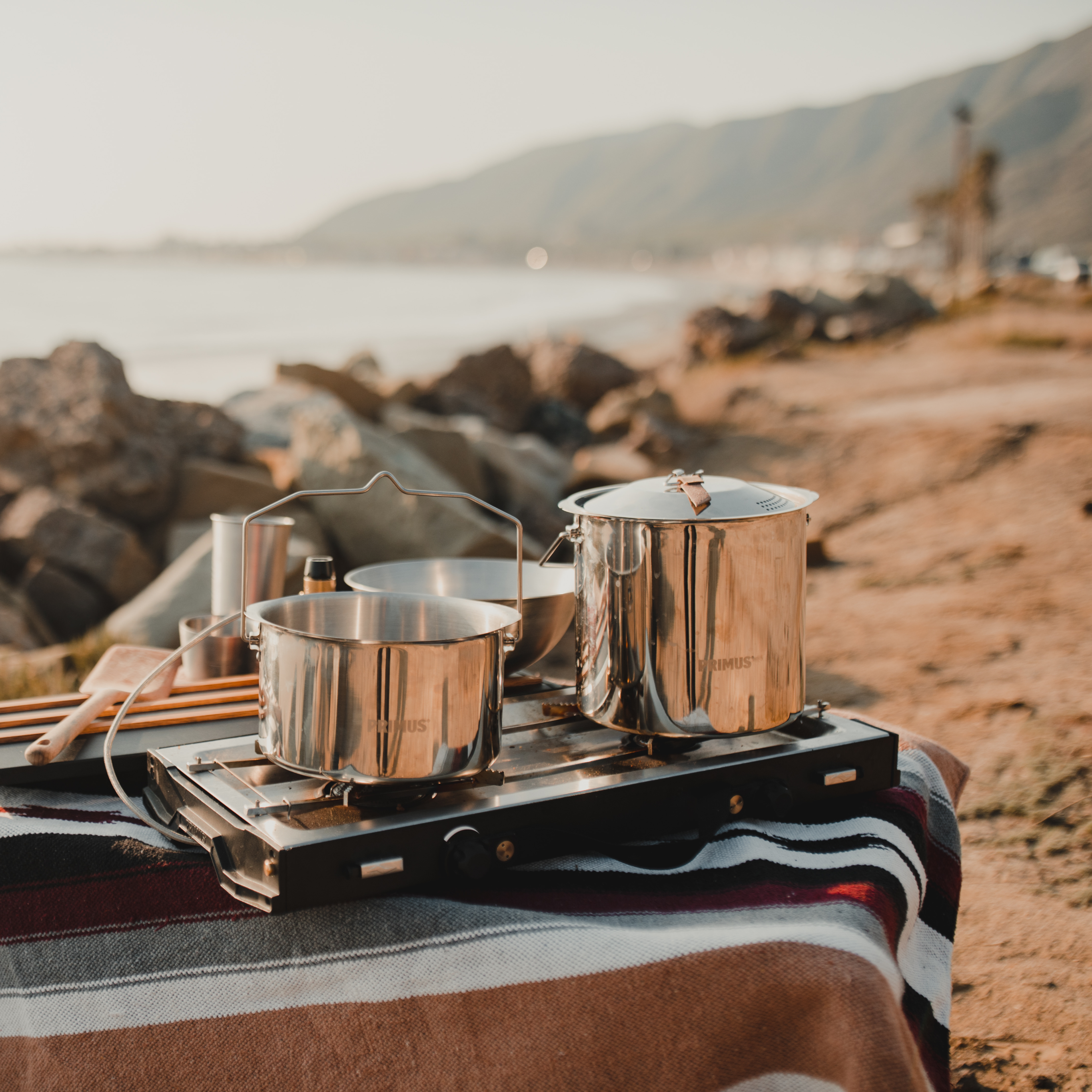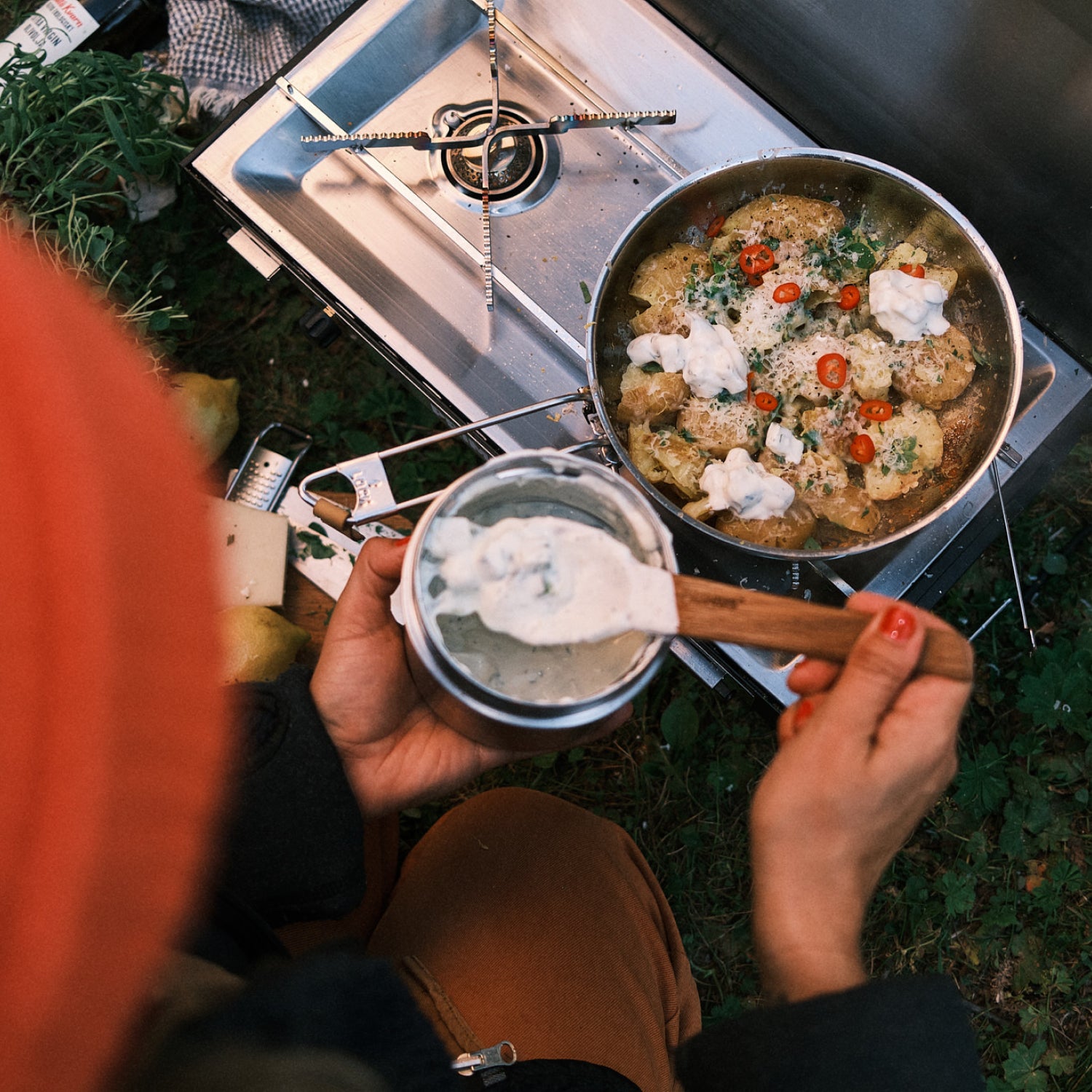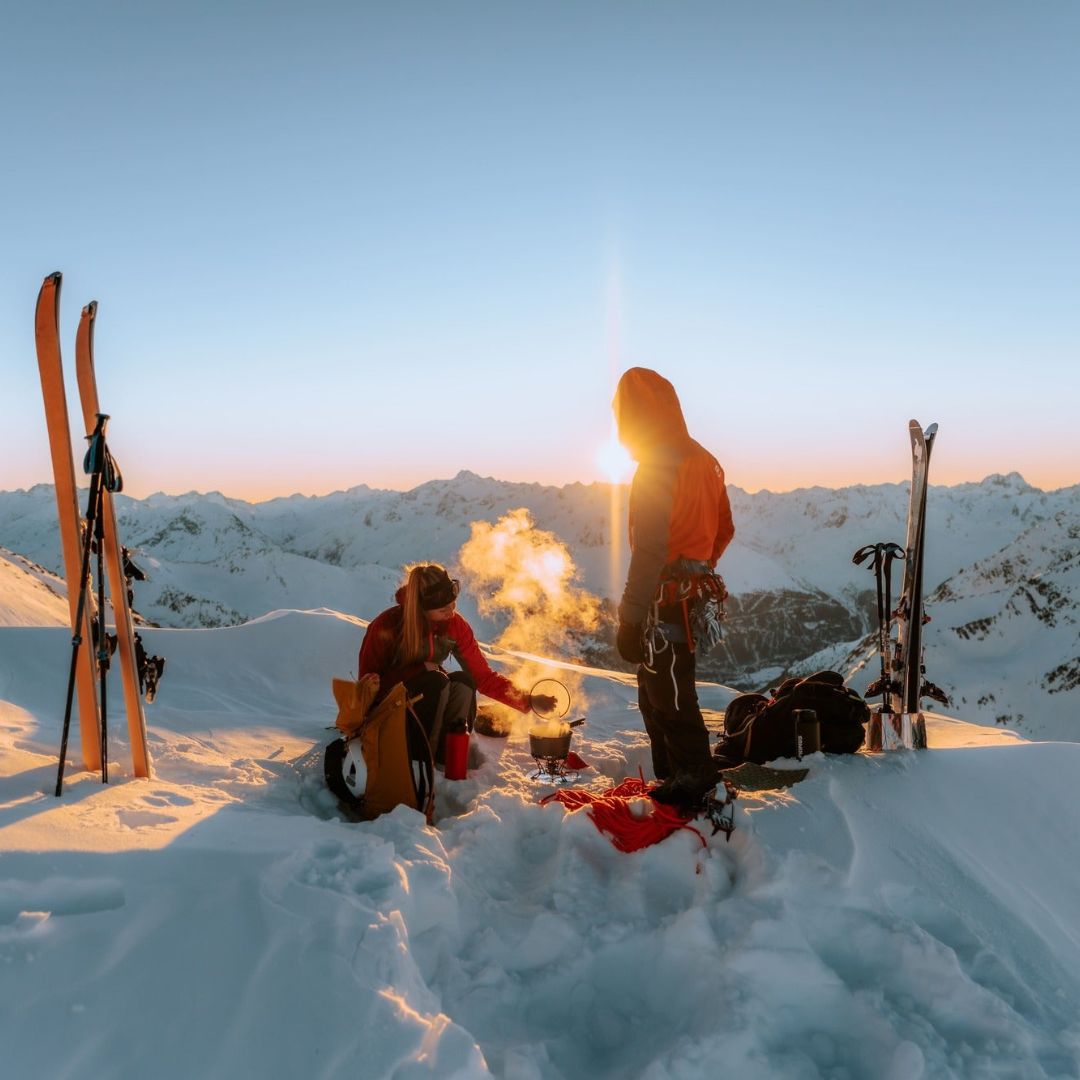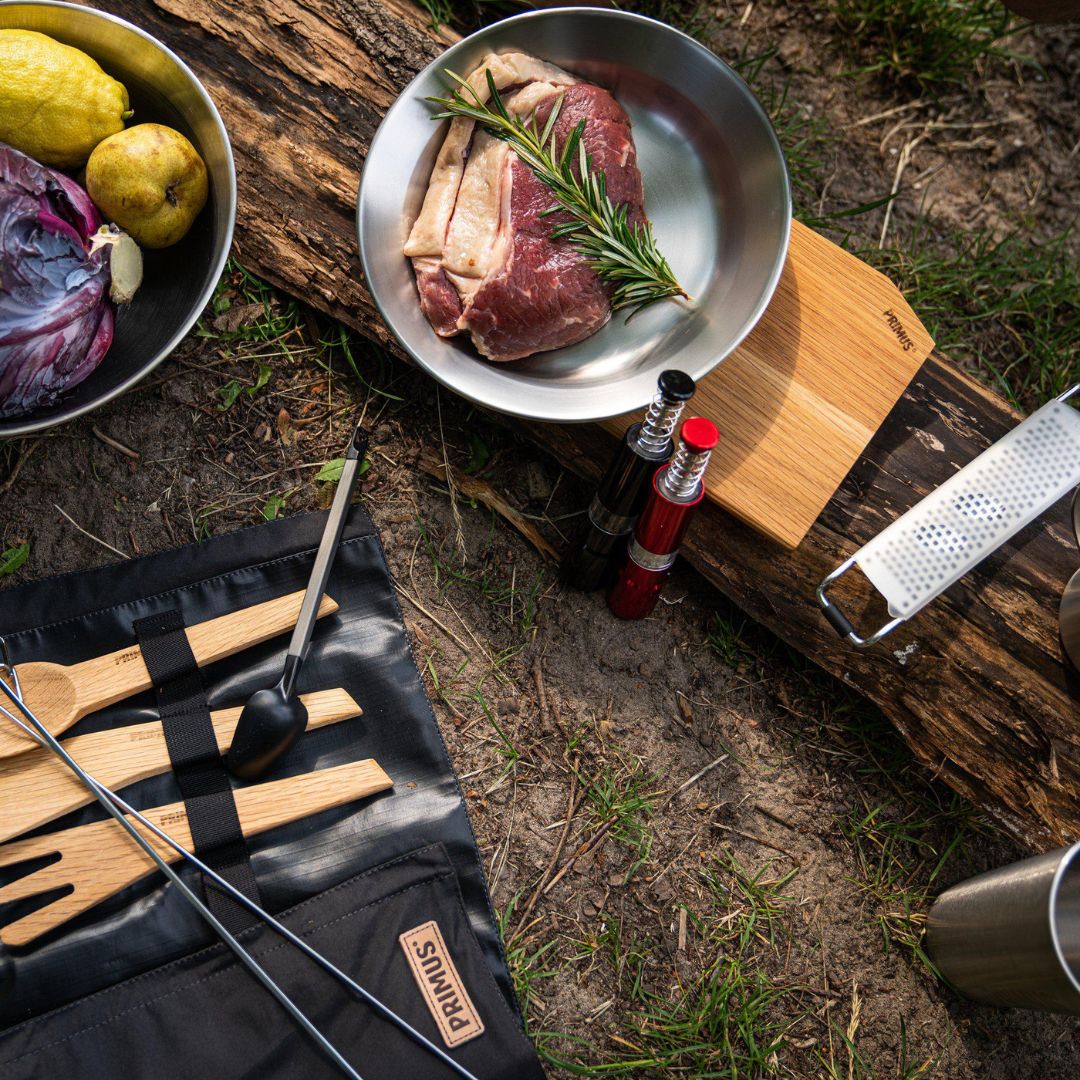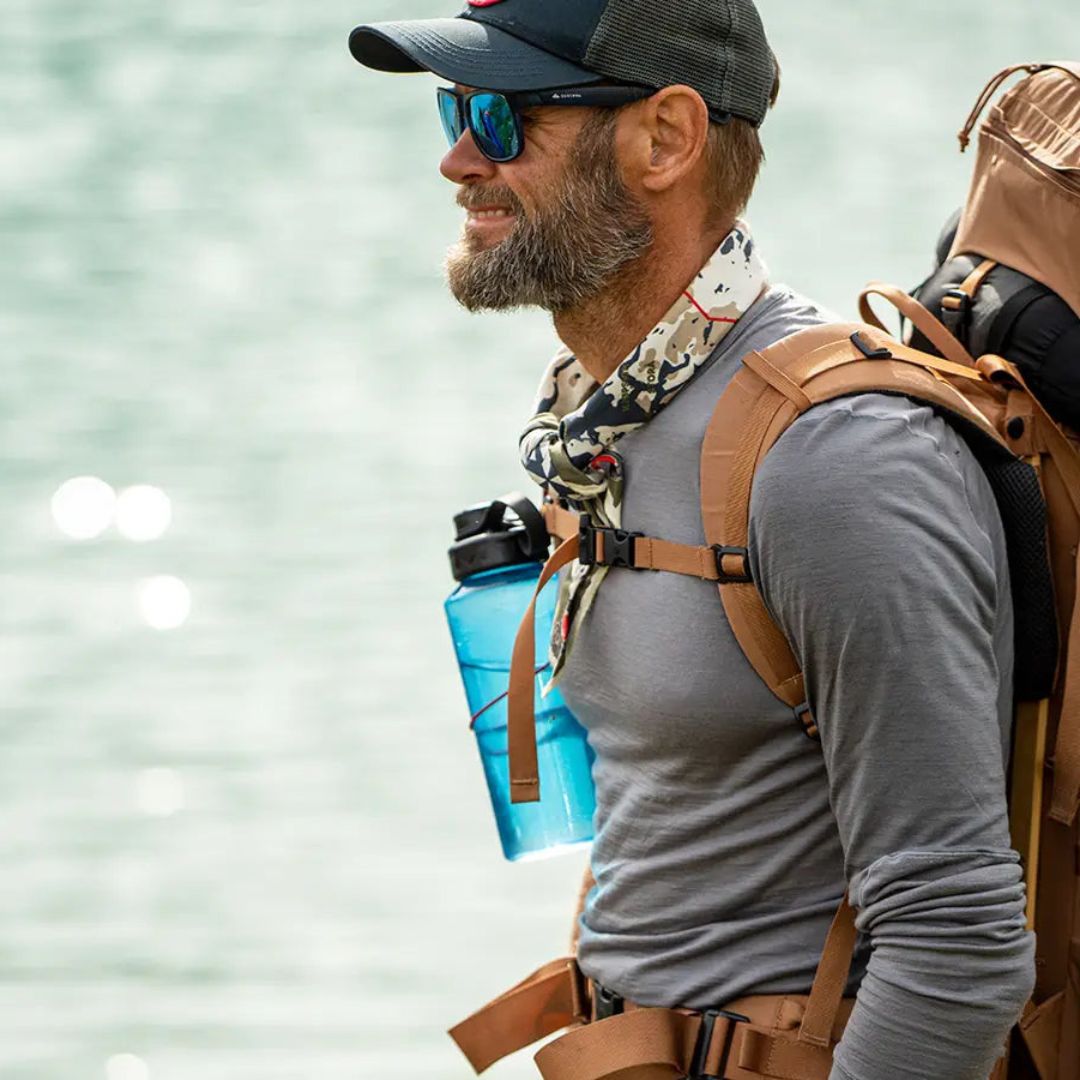HOW TO LIGHT THE FIRE
Once you have found a suitable location, it's time to light the fire. Every fire needs three things, the so-called “fire triangle”: dry and easily flammable material, heat, and oxygen. You can either take dry material with you or use what nature has to offer. Spruce, pine, and birch are good woods to make a fire with. A great tip is to gather plenty of material first and then sort it by size before lighting the fire.
Tinder
A basic principle when making a fire is to go from small to big. The smallest material is called tinder, and this is what first catches fire. It can be birch bark, dry grass, or pitch firewood from an old pine stump. A good practice is to always bring a small waterproof container with tinder on your adventures. A tampon or cotton ball smeared with petroleum jelly is a classic wilderness trick that provides a stable flame. If the ground is cold or damp, it's a good idea to try and get the fire off the ground by building a “raft” of sticks below. If it's windy, it's good to build a windbreak using things you have with you or find at the site. Get down on your knees and light match/lighter right next to the tinder and then ignite.
Kindling
Have a pile of small kindling right next to the fire, ready to add. Once the tinder has caught fire, you can start feeding the fire with kindling like 10-15 centimeter long twigs, “feather sticks,” or other dry material that you find on the ground. If the material is wet, you can whittle away the outer layer with your knife or split large logs to access the drier heartwood inside. Always place the materials at an appropriate distance apart – about 0.5–1 centimeter – so that the fire always gets enough oxygen.
Firewood
When the fire has started to take hold, it's time to use the primary firewood made up of larger branches. If your goal is to create a cozy fire to sit around that doesn’t need to be fired up as often, it's best to start with thinner branches and logs and add thicker pieces as the fire progresses. For cooking fire, a tip to avoid burning your food is to only use smaller sticks adding to the fire more frequently to keep a consistent flame. This creates a hot layer of embers faster than using big logs, and small sticks emit less smoke.
A common mistake is to feed the fire too quickly or too tightly, thus suffocating it. The fire always needs oxygen to thrive. Once the fire gets going, it only needs to be fed at regular intervals. Then it's time to just enjoy the warmth, light, and cozy atmosphere around the fire.
When you leave the spot, it's important to use plenty of water to completely extinguish the fire. You should be able to touch the ash and remaining coals to be sure the fire is completely out. Then, look around and always leave the spot in the same or better condition than you found it.

